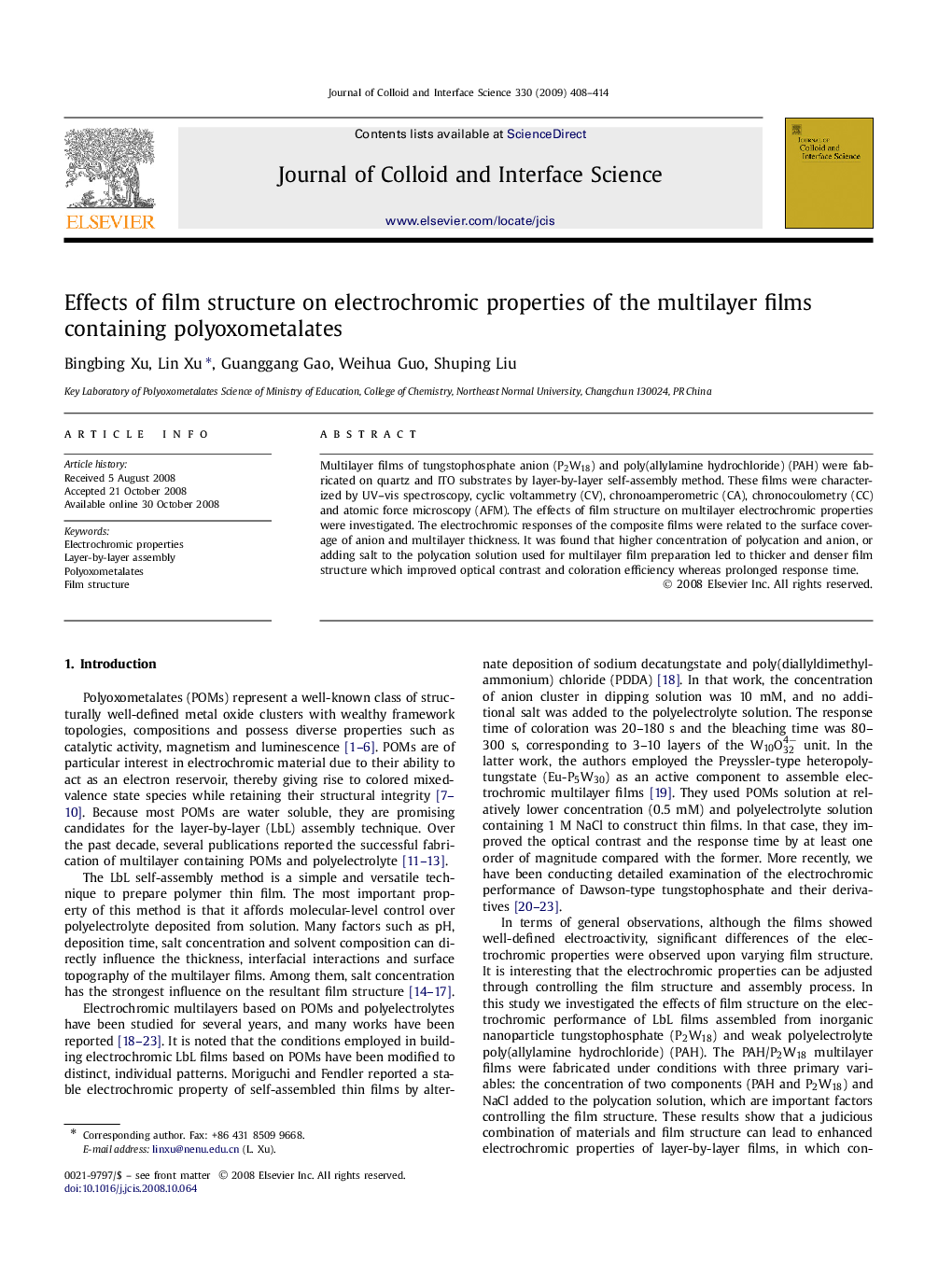| Article ID | Journal | Published Year | Pages | File Type |
|---|---|---|---|---|
| 610598 | Journal of Colloid and Interface Science | 2009 | 7 Pages |
Multilayer films of tungstophosphate anion (P2W18) and poly(allylamine hydrochloride) (PAH) were fabricated on quartz and ITO substrates by layer-by-layer self-assembly method. These films were characterized by UV–vis spectroscopy, cyclic voltammetry (CV), chronoamperometric (CA), chronocoulometry (CC) and atomic force microscopy (AFM). The effects of film structure on multilayer electrochromic properties were investigated. The electrochromic responses of the composite films were related to the surface coverage of anion and multilayer thickness. It was found that higher concentration of polycation and anion, or adding salt to the polycation solution used for multilayer film preparation led to thicker and denser film structure which improved optical contrast and coloration efficiency whereas prolonged response time.
Graphical abstractModel of PAH/P2W18 multilayer film microstructure at a low NaCl concentration (left) and at a high NaCl concentration (right).Figure optionsDownload full-size imageDownload as PowerPoint slide
